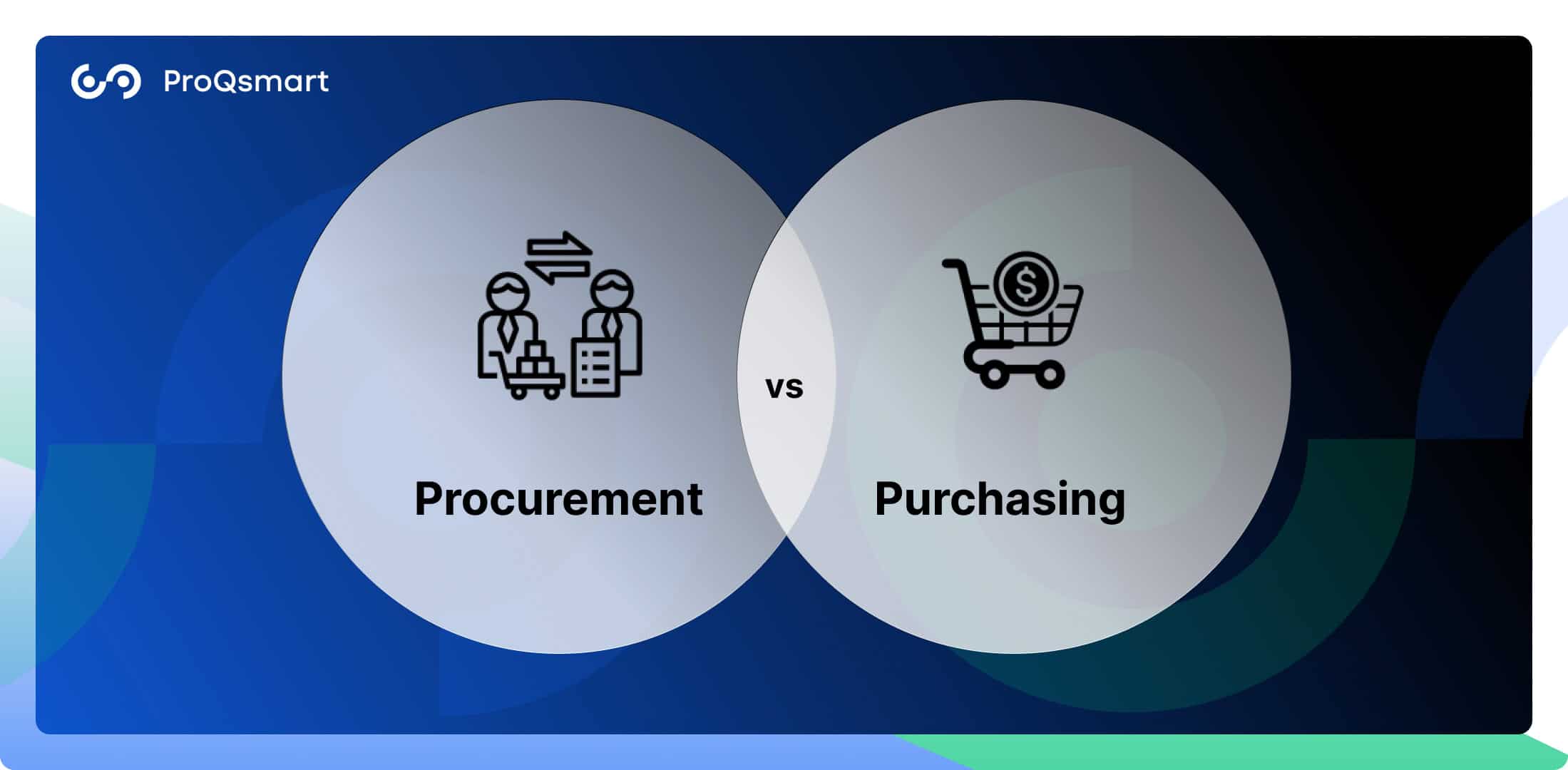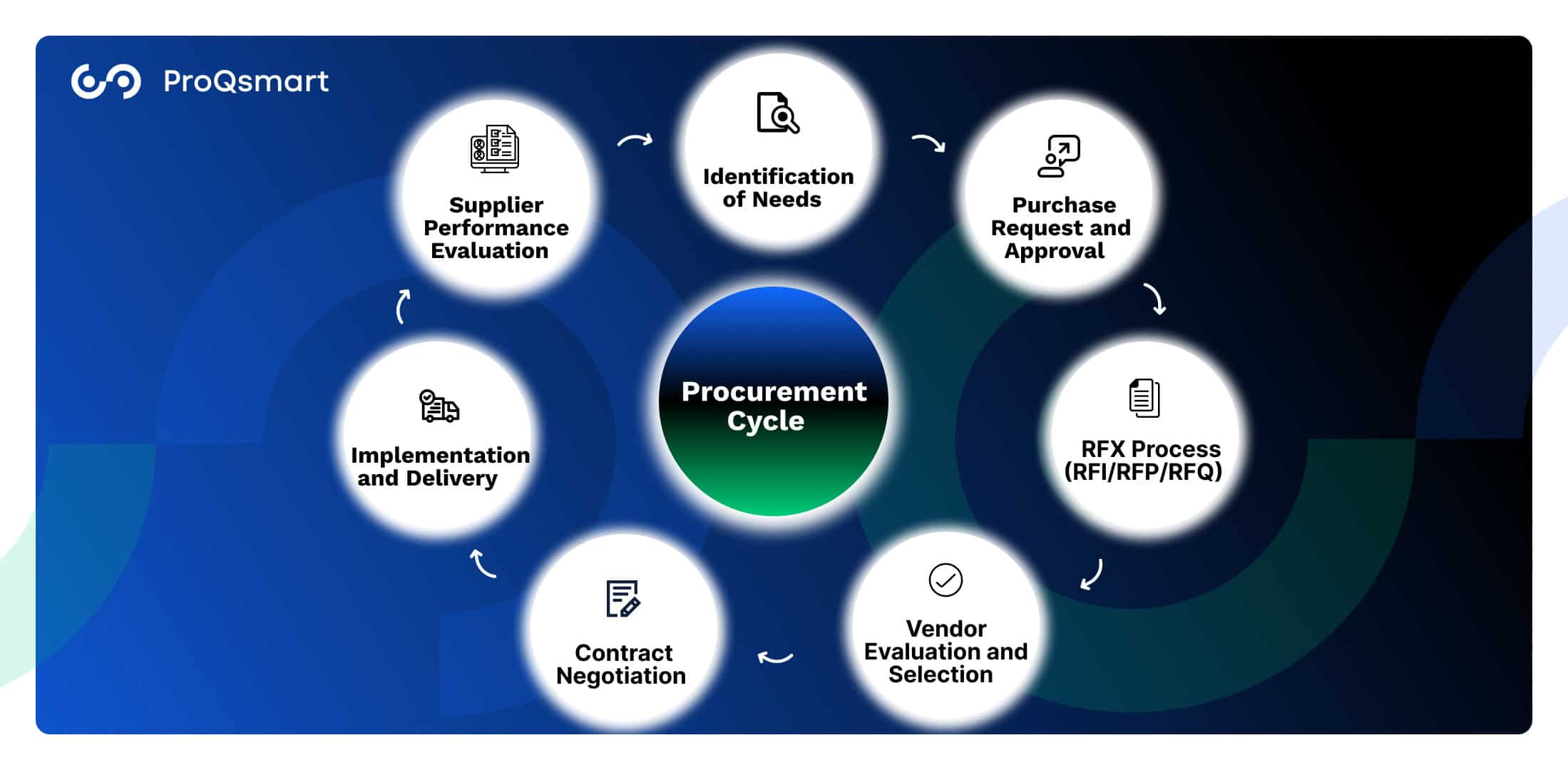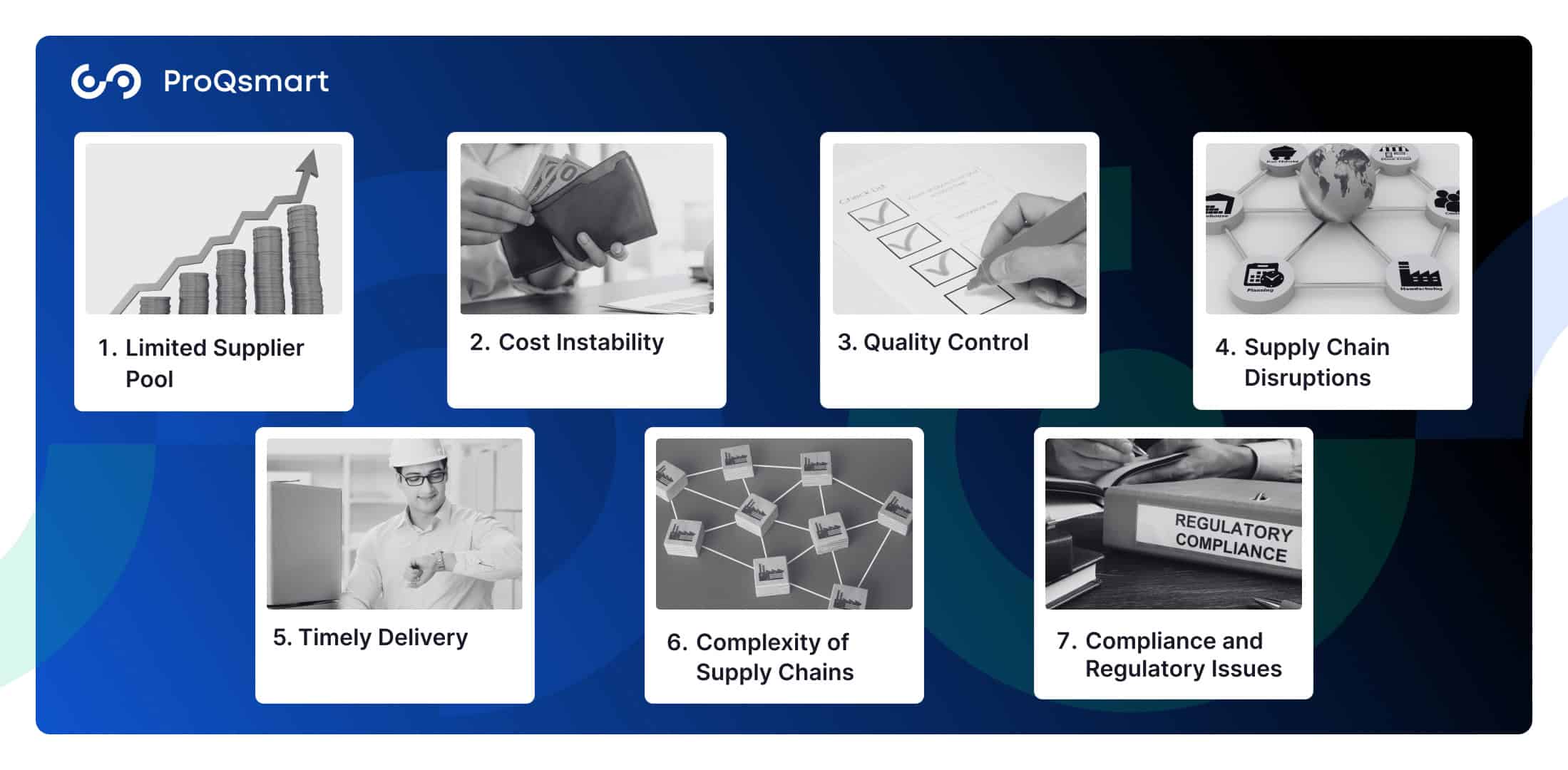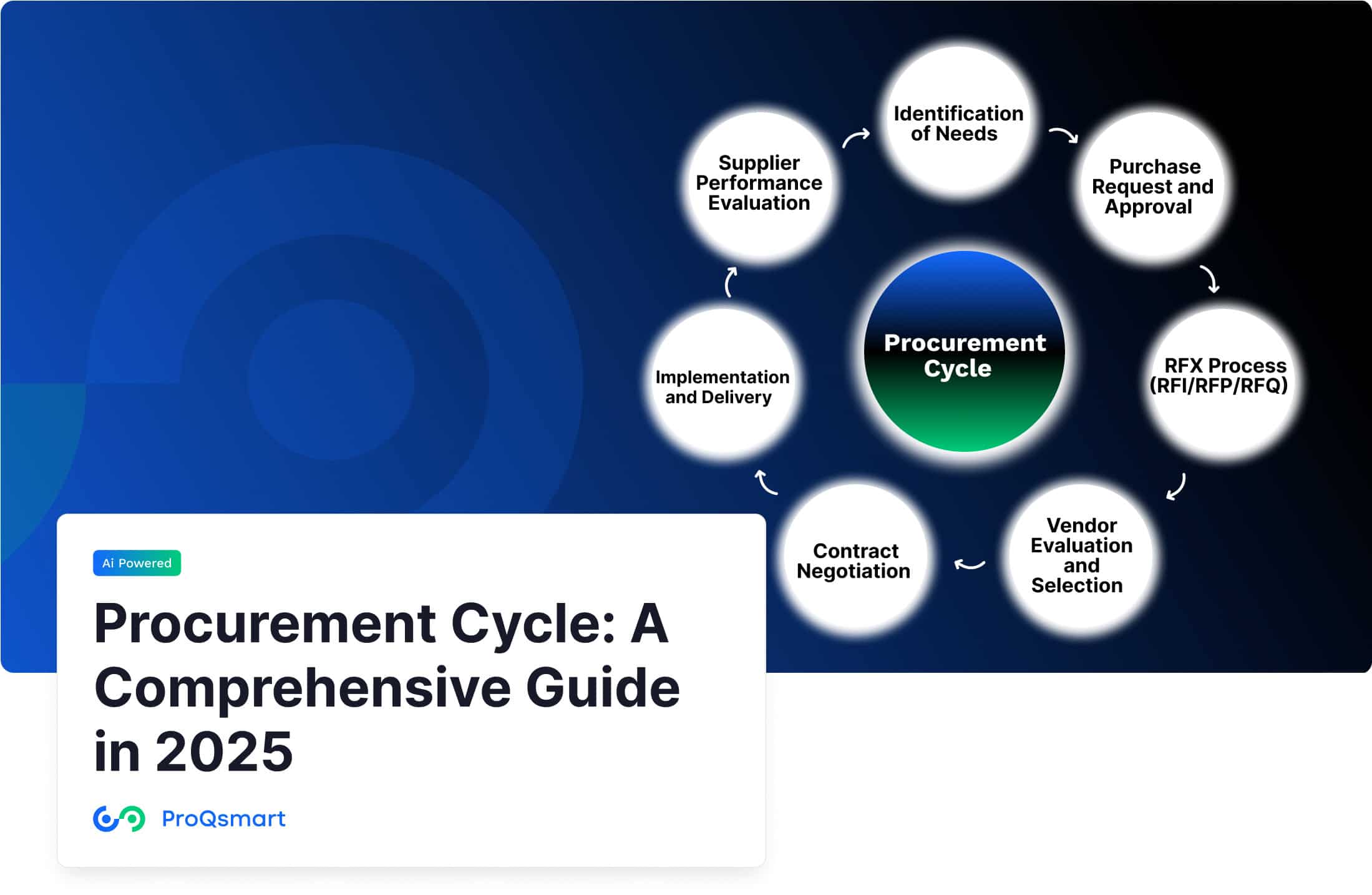Effective procurement strategies are vital for organizations seeking to optimize their operations, manage costs, and enhance overall productivity. The procurement cycle serves as a structured framework that guides businesses through the complex process of acquiring goods and services. As we advance into 2025, understanding the nuances of the procurement cycle is essential for organizations aiming to leverage best practices and technological advancements in their purchasing processes. This comprehensive guide will delve into the definition of the procurement cycle, outline its key stages, and emphasize the significance of each step in ensuring successful procurement outcomes.
What is the Procurement Cycle?
The procurement cycle refers to a systematic process that organizations follow to acquire goods, services, or work from external suppliers. This cycle encompasses a series of stages that begin with identifying a need and culminate in evaluating supplier performance post-delivery. Besides, by employing a structured approach to procurement, organizations can ensure transparency, efficiency, and compliance with internal policies and regulations.
The procurement cycle is not merely a transactional process; it involves strategic decision-making that impacts an organization’s overall performance. Effective procurement can lead to cost savings, improved quality of goods and services, and stronger supplier relationships.
Moreover, the procurement cycle is adaptable. Organizations may modify their processes based on their size, industry, or specific project requirements. Therefore, this flexibility allows businesses to tailor their procurement strategies to meet unique challenges while maintaining best practices.
Procurement vs Purchasing

Procurement is a comprehensive process encompassing strategic planning, supplier relationship management, and long-term value creation, whereas purchasing focuses on transactional activities.
|
Aspect |
Procurement |
Purchasing |
|
Scope |
Comprehensive, covering the entire procurement lifecycle. |
Limited to the act of purchasing and order fulfillment. |
|
Focus |
Long-term value creation, cost savings, and risk management. |
Short-term, price-focused transactions. |
|
Role in Organization |
Strategic driver, aligning procurement with organizational goals. |
Operational, ensuring timely acquisition of goods/services. |
|
Key Activities |
Supplier evaluation, contract management, spend analysis, and relationship building. |
Order placement, price negotiation, and payment processing. |
|
Importance |
Critical for managing supply chain disruptions and ensuring long-term success. |
Essential for day-to-day operational efficiency. |
Key Stages of the Procurement Cycle

The procurement cycle consists of several key stages, each playing a vital role in ensuring successful outcomes:
-
Identification of needs
-
Purchase Request and Approval
-
Vendor Evaluation and Selection
-
Contract Negotiation
-
Implementation and Delivery
-
Supplier Performance Evaluation
Stage 1: Identification of Needs
The first stage of the procurement cycle involves identifying specific needs within the organization. This process requires collaboration among various stakeholders who articulate their requirements for goods or services. It is also essential to define these needs clearly, including specifications such as quantity, quality standards, timelines, and budget constraints. Additionally, a well-defined need sets the foundation for the entire procurement process and helps prevent misunderstandings later on.
Stage 2: Purchase Request and Approval
Once needs are identified, a formal purchase request is generated. This request typically includes detailed information about the required goods or services and is submitted for approval by relevant departments or management. The approval process further ensures that all purchases align with organizational policies and budgetary constraints. It also fosters accountability by requiring justification for expenditures.
Stage 3: RFX Process (RFI/RFP/RFQ)
-
Request for Information (RFI)
A preliminary step to gather market insights and supplier capabilities without committing to a purchase. -
Request for Proposal (RFP)
A formal invitation for vendors to submit detailed proposals on how they can meet the organization’s specific needs. -
Request for Quotation (RFQ)
A focused request to obtain pricing information from suppliers based on predefined specifications.
This structured approach ensures organizations can evaluate vendors effectively while giving suppliers a platform to highlight their strengths.
Stage 4: Vendor Evaluation and Selection
After receiving proposals or quotations from various suppliers, organizations enter the vendor evaluation stage. This involves assessing each proposal against predetermined criteria such as price, quality, delivery timelines, reliability, and past performance. Stakeholders may conduct meetings or presentations with shortlisted vendors to clarify any questions and further evaluate their capabilities.
Selecting the right vendor is crucial as it directly impacts project success and overall satisfaction with the procurement process. A thorough evaluation explicitly helps mitigate risks associated with vendor selection by ensuring that chosen suppliers align with organizational goals.
Stage 5: Contract Negotiation
Once a vendor has been selected, the next step is contract negotiation. This stage entails discussing terms of agreement that cover pricing structures, deliverables, timelines for delivery, payment terms, warranties, and other legal obligations. Effective negotiation is definitely a key to establishing a mutually beneficial relationship between the organization and the vendor.
Additionally, a well-negotiated contract not only protects both parties’ interests but also sets clear expectations for performance and accountability throughout the duration of the agreement.
Stage 6: Implementation and Delivery
Following contract finalization, implementation begins. This stage involves coordinating with the selected vendor to ensure timely delivery of goods or services according to agreed specifications. Effective communication between both parties is also essential during this phase to address any potential issues that may arise promptly.
Successful implementation ensures that organizational needs are met within stipulated timelines while maintaining quality standards.
Stage 7: Supplier Performance Evaluation
The final stage of the procurement cycle involves evaluating supplier performance post-delivery. Organizations assess whether vendors have met contractual obligations regarding quality, timeliness, service levels, and compliance with terms agreed upon during negotiations.
Performance evaluation serves multiple purposes: it significantly helps organizations identify areas for improvement in supplier relationships, informs future purchasing decisions, and also provides valuable insights into potential adjustments needed in procurement strategies moving forward.
Challenges in the Procurement Cycle

The procurement cycle is fraught with various challenges that can significantly impact an organization’s efficiency and effectiveness in acquiring goods and services. Below are some of the key challenges encountered in the procurement cycle:
1. Limited Supplier Pool
A limited number of qualified suppliers can significantly impact procurement processes. When organizations rely on a small pool of suppliers for critical materials or services, any disruption—such as delays or price hikes—can eventually jeopardize project timelines and budgets. This situation can lead to reduced competition, resulting in higher prices and diminished negotiation power for purchasing organizations.
2. Cost Instability
Cost volatility is a pervasive challenge in procurement. Fluctuating prices for materials and services can create budgetary constraints that complicate planning and execution. Organizations must navigate these cost fluctuations while striving to maintain quality and meet deadlines. Rising costs associated with raw materials, labor, and logistics can correspondingly lead to unanticipated expenses that strain profit margins.
3. Quality Control
Ensuring the quality of procured materials is paramount for any organization. Subpar materials can compromise project integrity and safety, leading to costly rework or delays. Overall, organizations must implement rigorous quality control measures to verify that all materials meet specified standards. Maintaining consistent quality of raw materials is critical; any deviation can also result in defective products that harm brand reputation and customer satisfaction.
4. Supply Chain Disruptions
Organizations are vulnerable to supply chain disruptions caused by various factors such as natural disasters, geopolitical tensions, or transportation issues. These disruptions can conversely halt the flow of goods and services, leading to delays, increased costs, and inventory shortages. Robust contingency planning and flexible sourcing strategies are necessary to mitigate these risks.
5. Timely Delivery
Timely delivery of materials is crucial for the success of any project or operational process. Delays in receiving essential supplies can halt progress and disrupt schedules. Factors contributing to delivery delays include unreliable suppliers, poor communication channels, and logistical challenges. Organizations must also establish clear expectations with suppliers regarding delivery timelines and monitor performance closely to ensure compliance.
6. Complexity of Supply Chains
The complexity of supply chains presents significant challenges for organizations. Managing multiple suppliers across various categories can eventually lead to coordination issues that complicate procurement efforts. Effective supply chain management practices are essential for ensuring smooth operations and also minimizing risks associated with procurement.
7. Compliance and Regulatory Issues
Navigating regulatory compliance is a critical challenge for organizations involved in procurement. Organizations must adhere to local regulations when sourcing materials or services, ensuring compliance with safety standards, environmental regulations, labor laws, as well as contractual obligations. Failure to comply with these regulations can further result in legal penalties and damage to an organization’s reputation.
How to Overcome Procurement Challenges in 2025
To overcome the challenges in the procurement cycle effectively, organizations can adopt several best practices that enhance efficiency, transparency, and collaboration. Here are some key strategies to consider:
Establish a Procurement Management Framework
Creating a robust procurement management framework is essential for addressing inefficiencies in the procurement process. This framework should further outline guidelines for monitoring and approving purchase requests, managing supplier relationships, negotiating contracts, and ensuring quality assurance. By having a structured approach, organizations can streamline workflows and significantly enhance accountability among team members.
Automate Procurement Processes
Implementing a fully digital procurement process can significantly improve efficiency. Utilizing cloud-based procurement software allows for streamlined workflows, real-time visibility into procurement activities, and automated documentation management. Additionally, automation reduces manual errors, enhances data accuracy, and provides stakeholders with timely updates on the status of procurement activities.
Foster Strong Supplier Relationships
Building and maintaining strong relationships with suppliers is crucial for successful procurement. Organizations should engage in regular communication with suppliers to establish clear expectations and performance metrics. Conducting periodic evaluations of supplier performance significantly helps identify areas for improvement and also fosters collaboration that can lead to innovation and cost savings.
Utilize Competitive Bidding
To ensure cost-effectiveness, organizations should seek multiple competitive bids from potential suppliers for significant purchases. This practice not only promotes competition but also provides insights into market pricing and terms. Establishing a process for regularly obtaining bids helps organizations negotiate better deals and as well as secure favorable contract terms.
Implement Risk Management Protocols
Developing risk management protocols is vital for identifying, assessing, and mitigating potential risks associated with procurement activities. Organizations should establish guidelines to address issues such as supplier disruptions, contract disputes, or compliance violations. Additionally, proactive approach to risk management protects the organization’s interests and minimizes the likelihood of costly setbacks.
Monitor Compliance and Regulatory Requirements
Ensuring compliance with legal and regulatory requirements is critical in procurement. Organizations should document their procurement policies clearly and provide training to employees on compliance standards. Regular audits of procurement practices can also help identify any gaps in adherence to regulations, thereby minimizing legal risks.
Leverage Data Analytics
Data-driven decision-making is essential for optimizing procurement processes. Organizations should prioritize data completeness and accuracy to gain insights into spending patterns and supplier performance. Moreover, utilizing spend analysis tools helps identify opportunities for cost savings and informs strategic sourcing decisions.
Leveraging Technology in Procurement
Leveraging technology in procurement has fundamentally transformed how businesses operate, enabling more efficient processes and data-driven decision-making. With the right technological tools, organizations can easily identify their best suppliers, minimize costs, and ensure timely delivery. Procurement technology facilitates automation and streamlining of procurement processes, making them faster and more efficient. However, solutions like e-procurement platforms, digital dashboards, and specialized systems such as ProQsmart are essential in helping organizations enhance their procurement operations.
Role of AI in Streamlining Processes
Artificial Intelligence (AI) plays a pivotal role in automating repetitive tasks and enhancing data analysis within procurement. By maximizing time efficiency and minimizing costly mistakes, AI can significantly improve supplier selection through data-driven insights on supplier performance. For instance, AI can explicitly generate negotiation scripts and reports, allowing procurement teams to communicate effectively with suppliers. ProQsmart leverages AI technology to automate procurement workflows while ensuring compliance and transparency throughout the process.
Emerging Trends in 2025
As we look toward the procurement landscape in 2025 and beyond, significant changes are on the horizon, largely driven by digital transformation and sustainability initiatives. These trends are not just fleeting; they represent a fundamental shift in how procurement operates, necessitating that procurement leaders adapt to new realities.
Digital Transformation in Procurement
The advent of new digital technologies is revolutionizing procurement processes and supplier interactions. These tools significantly enhance efficiency and transparency, both of which are essential for fostering innovation in procurement. Key digital tools shaping this transformation include:
-
Cloud-Based Procurement Platforms: These platforms facilitate seamless operations and enable real-time collaboration among stakeholders.
-
Predictive Analytics: By leveraging data analytics, organizations can make better-informed decisions regarding supplier selection and also spend management.
-
Automated Supplier Management Systems: These systems streamline supplier onboarding and performance monitoring.
Conclusion
By mastering the procurement cycle and adopting the right tools, professionals can enhance transparency, streamline operations, and stay competitive in a dynamic market. Prioritizing best practices—such as fostering strong supplier relationships, embracing innovation, and focusing on sustainability—ensures procurement remains a key driver of organizational success.
To elevate your procurement processes, consider ProQsmart, a modern procurement platform designed to simplify workflows, improve supplier collaboration, and deliver data-driven insights. With features like automated procurement workflows, real-time analytics, and seamless integration, ProQsmart helps teams achieve greater efficiency as well as transparency.
Ready to transform your procurement strategy?
Book a demo with ProQsmart today!



